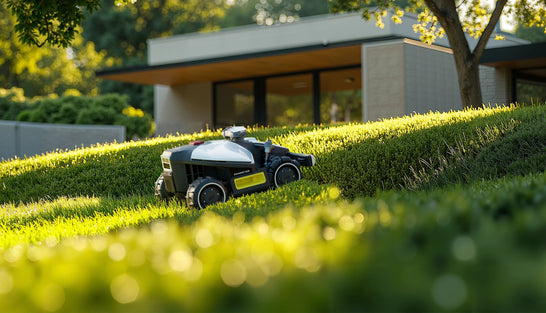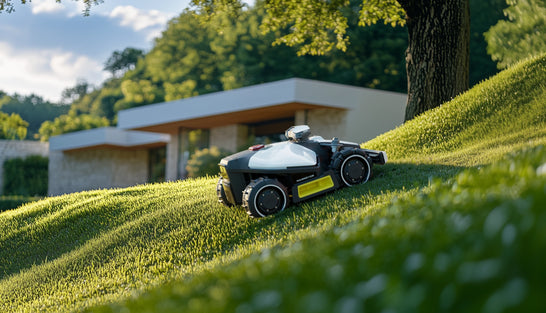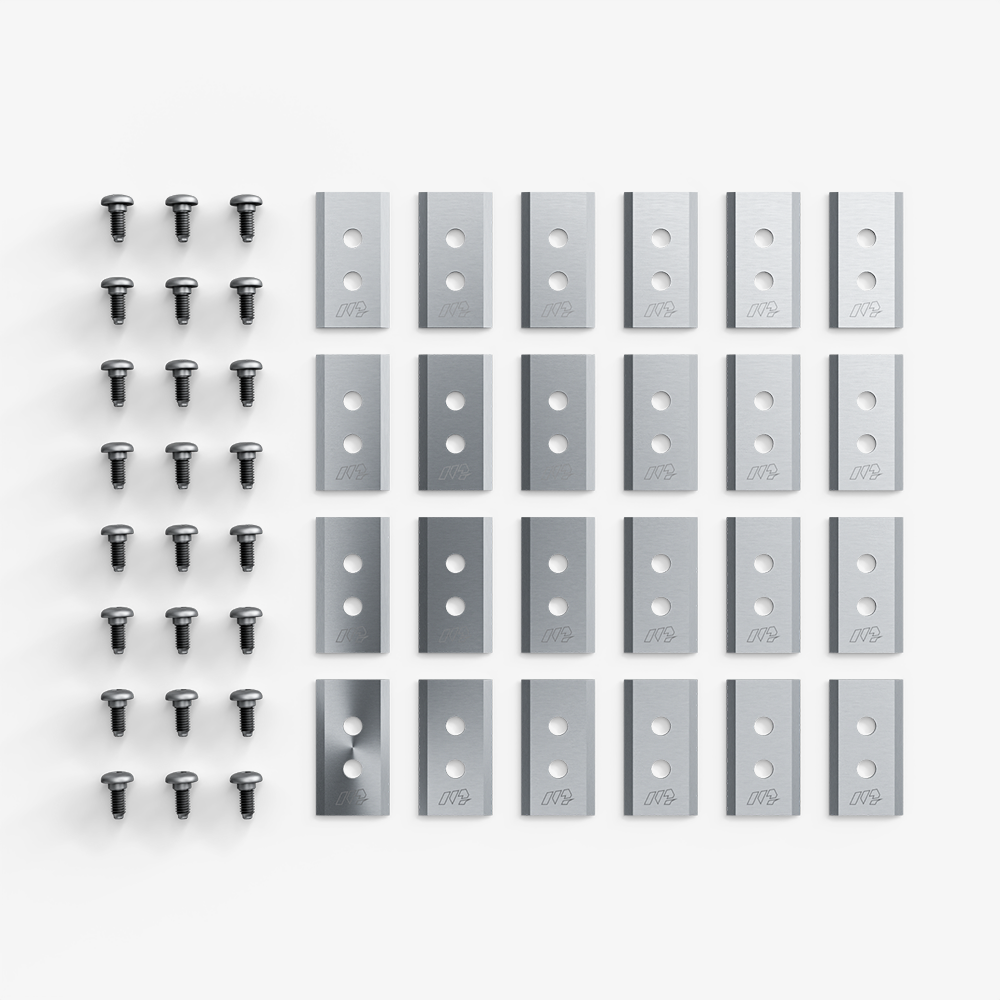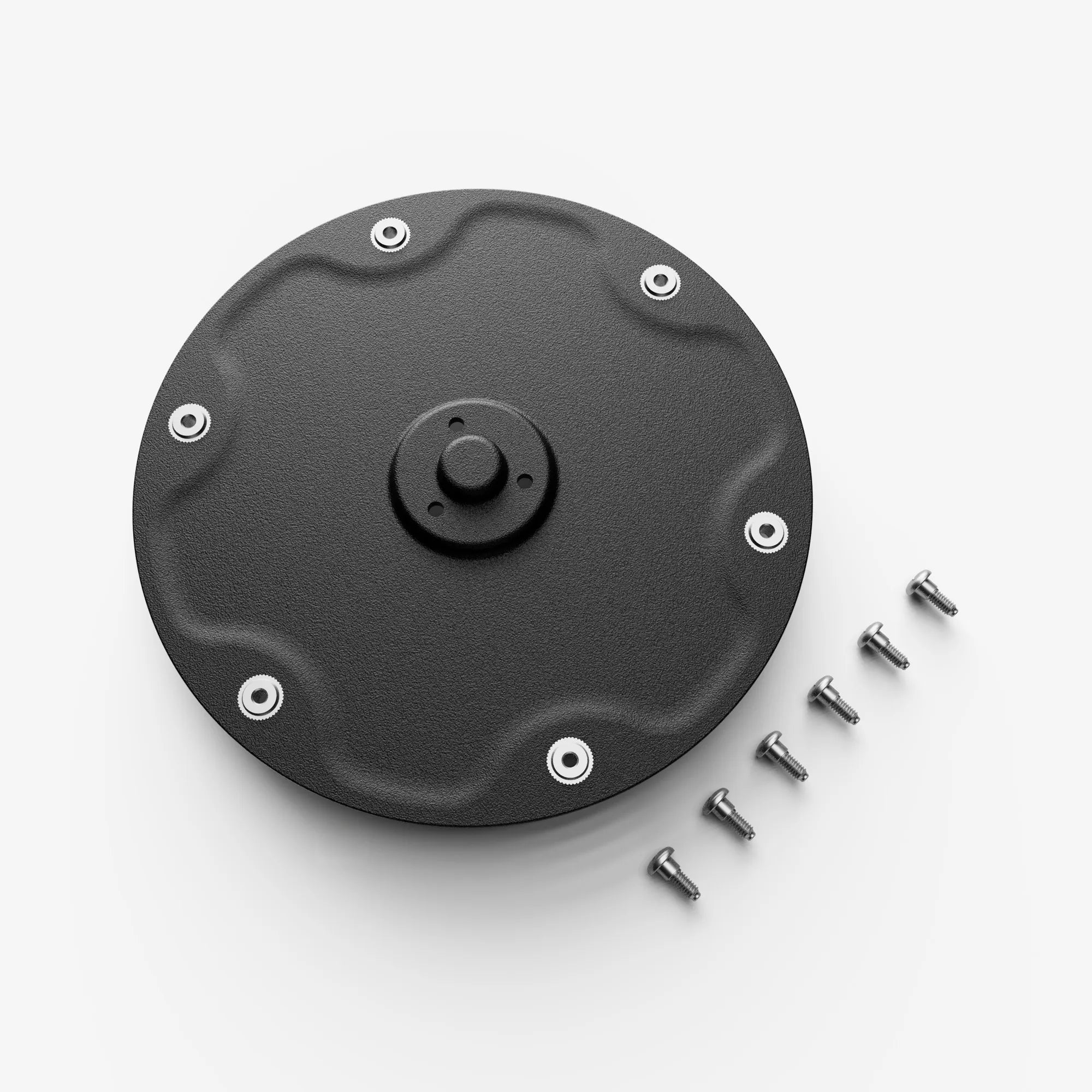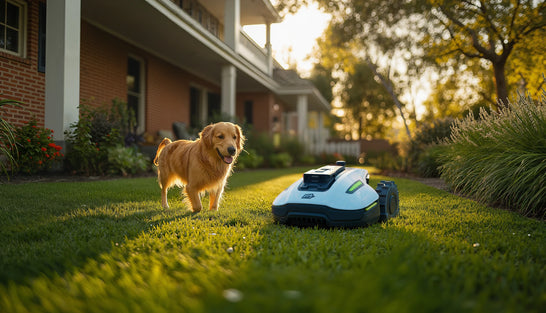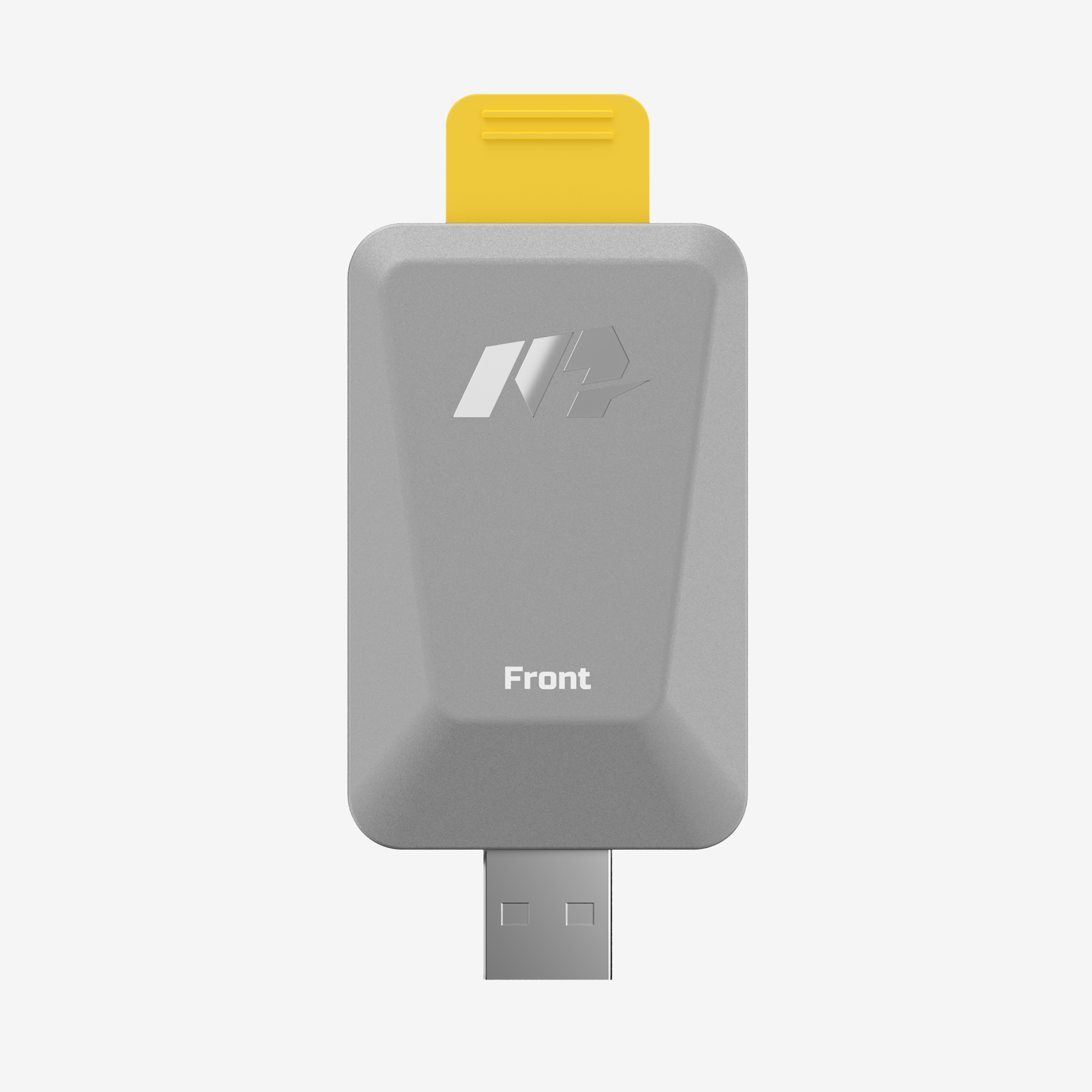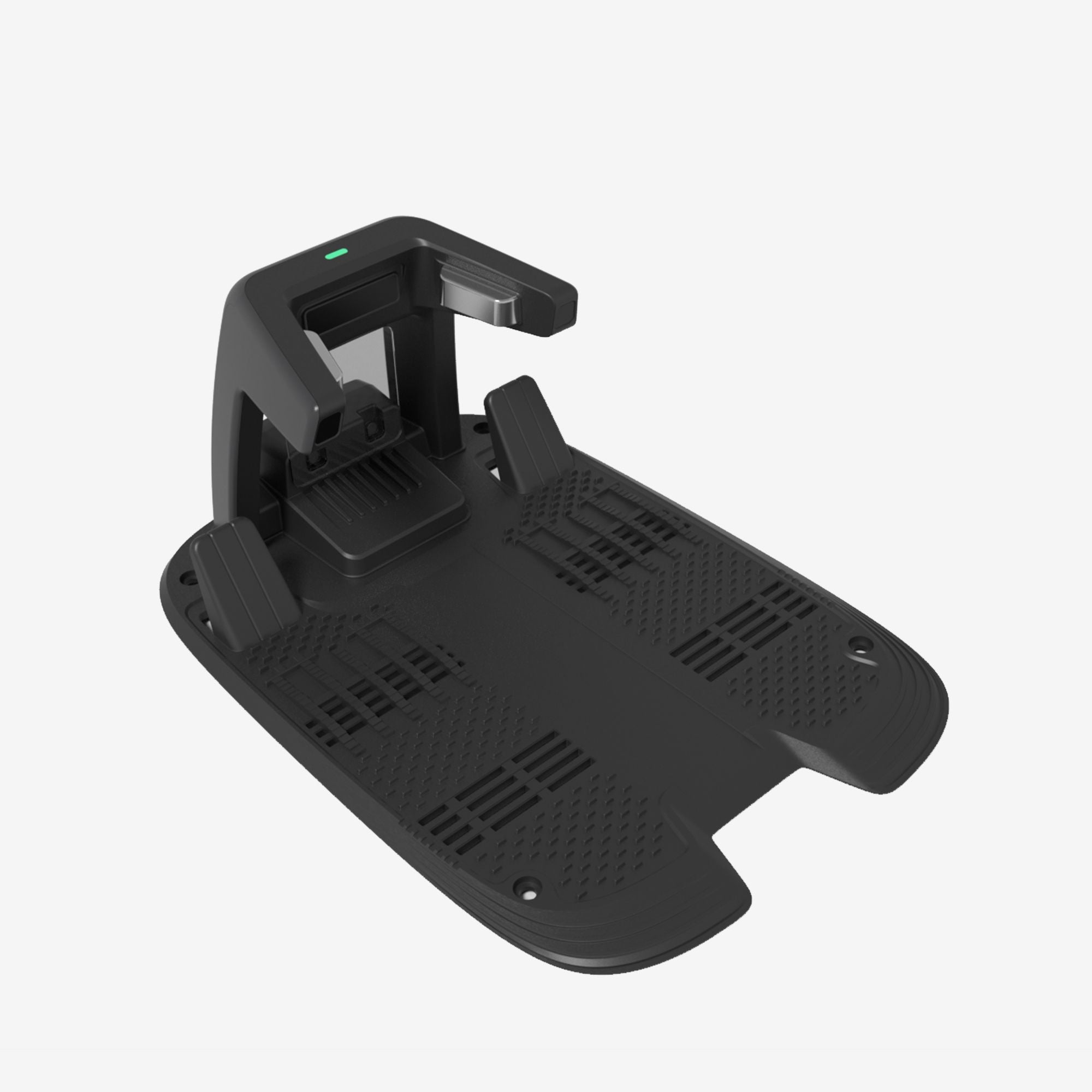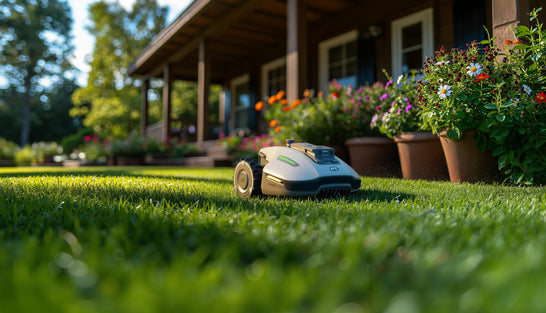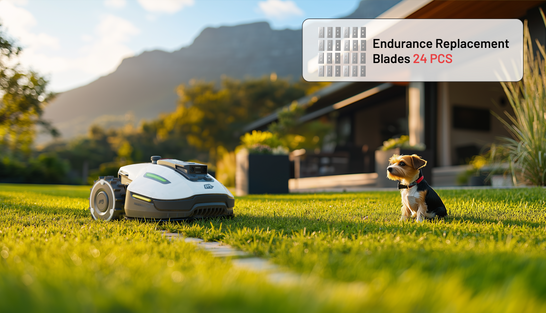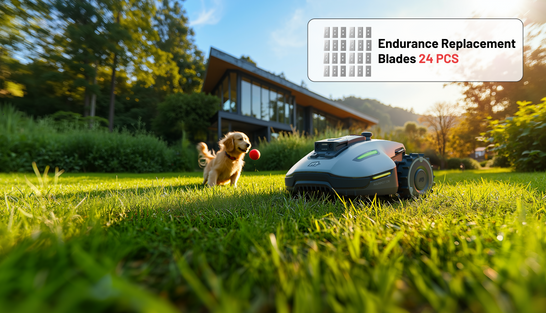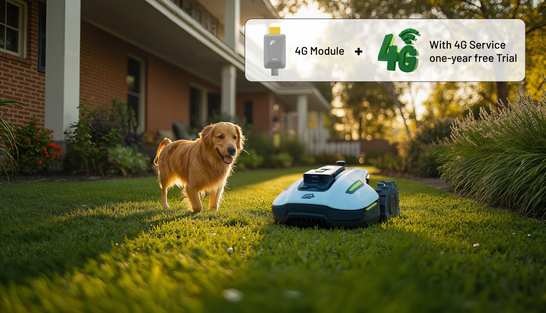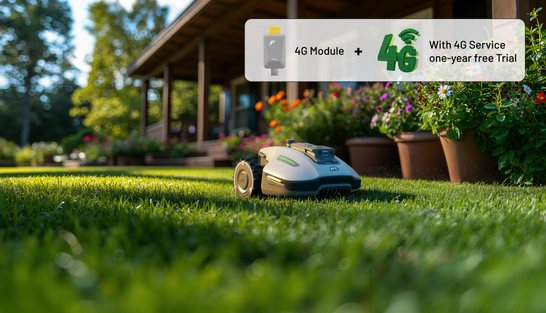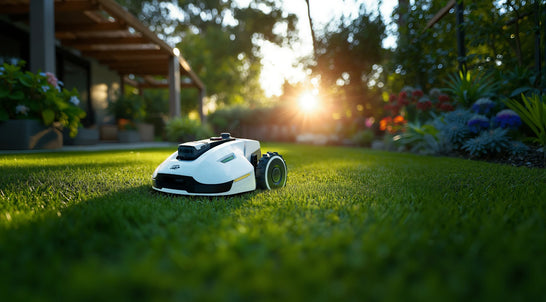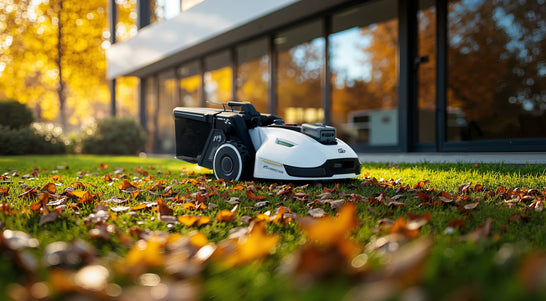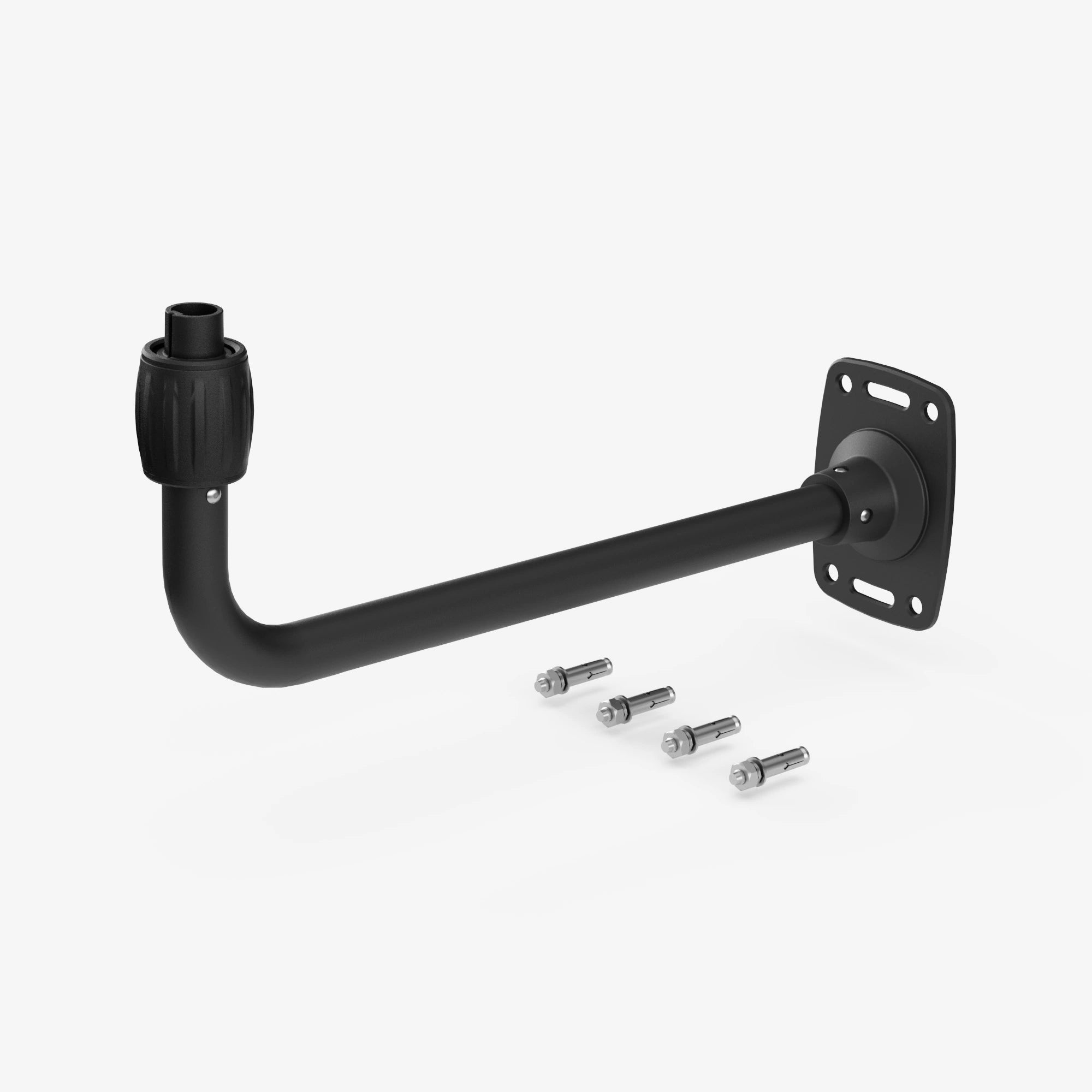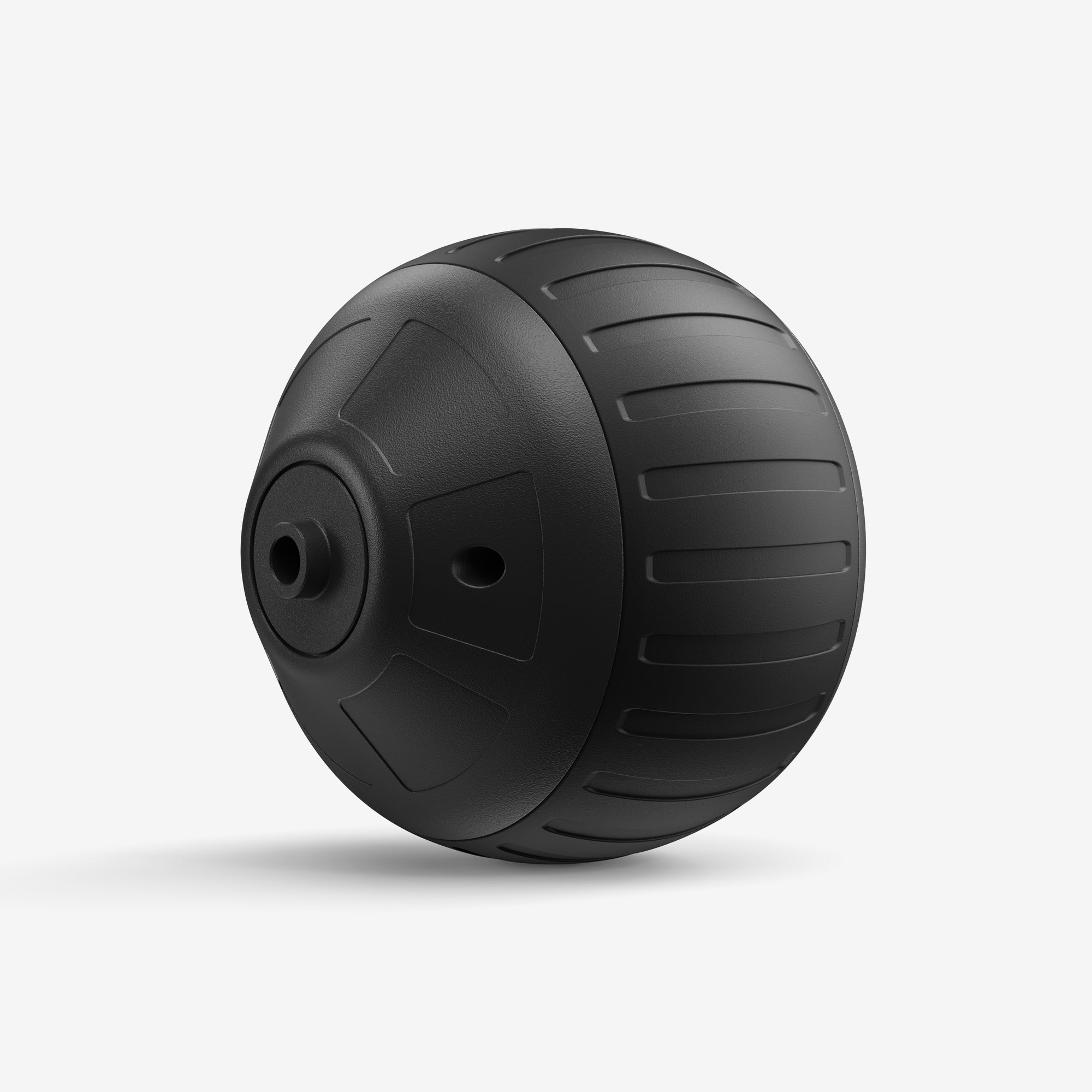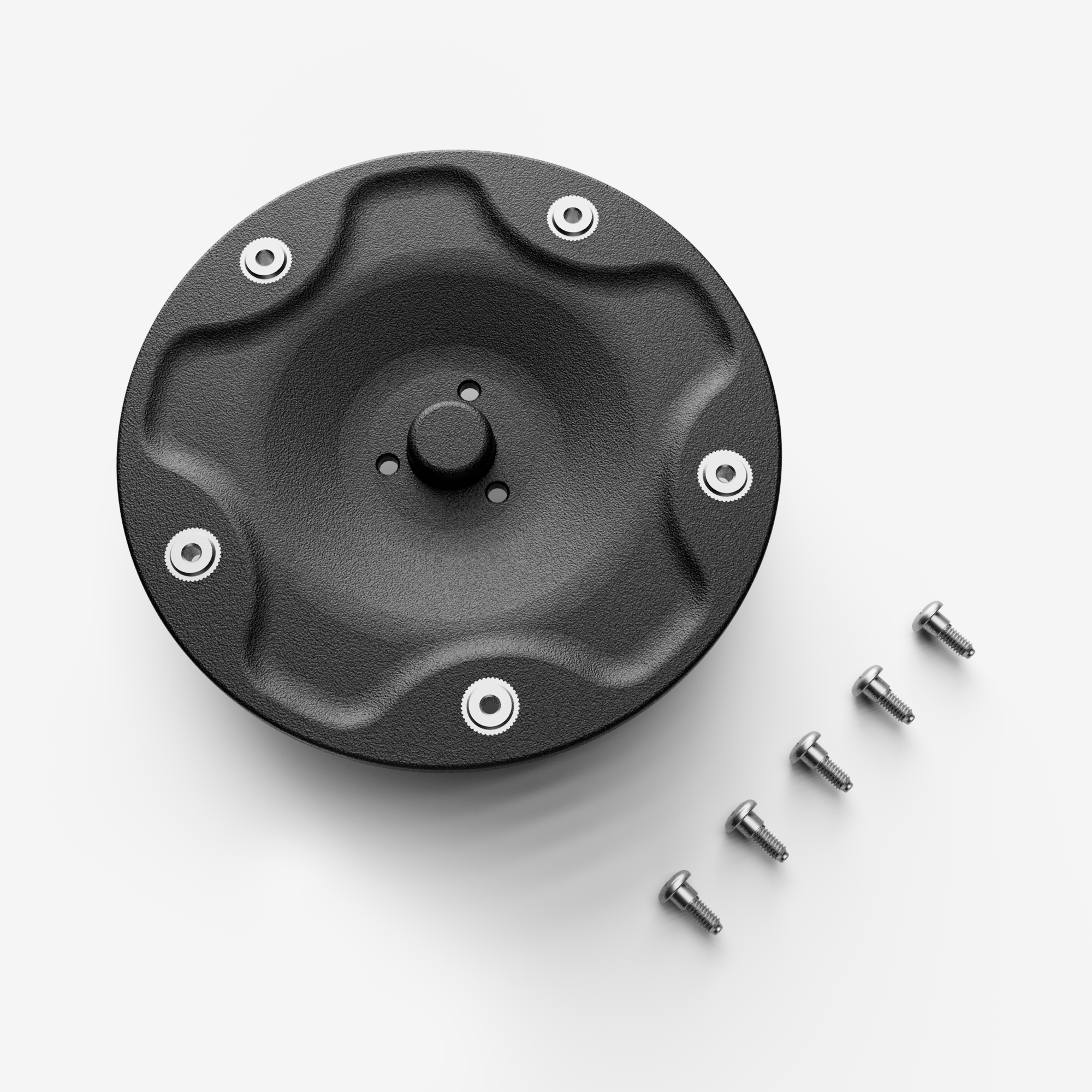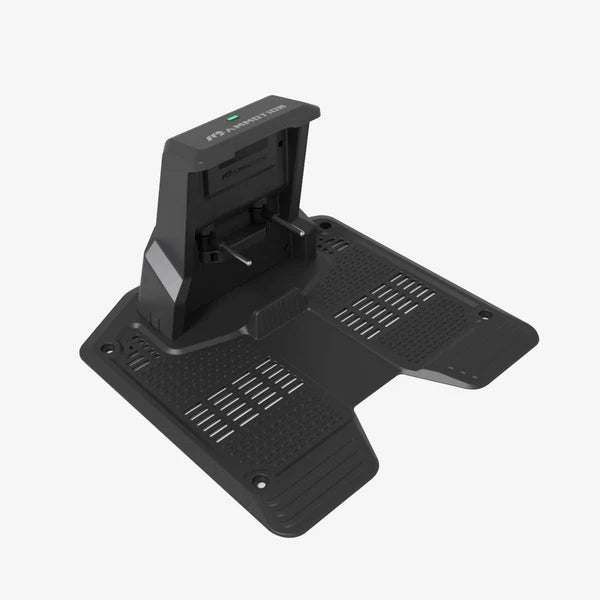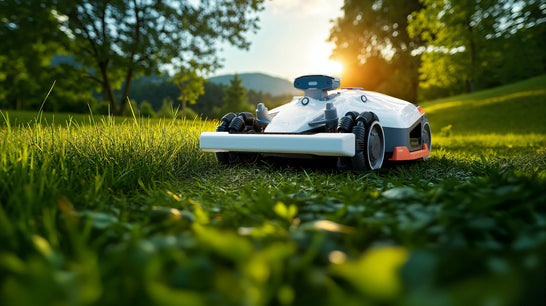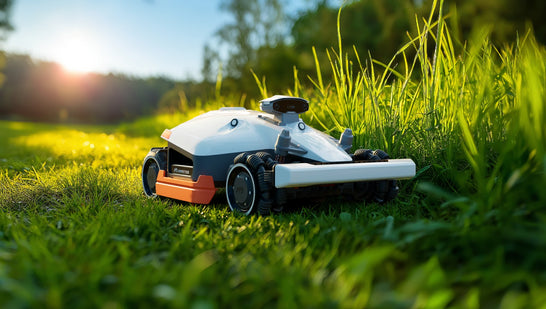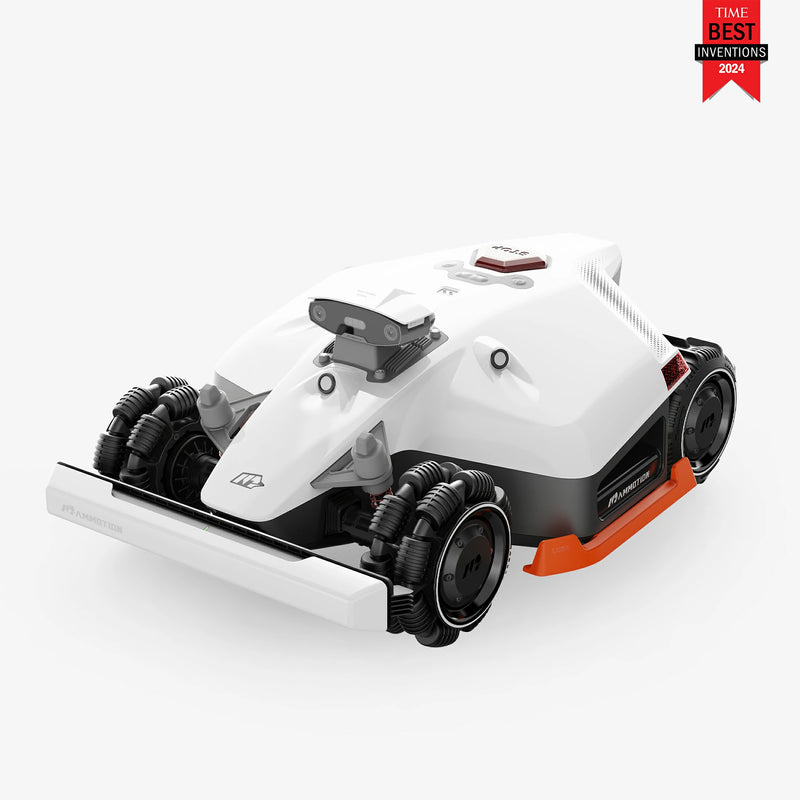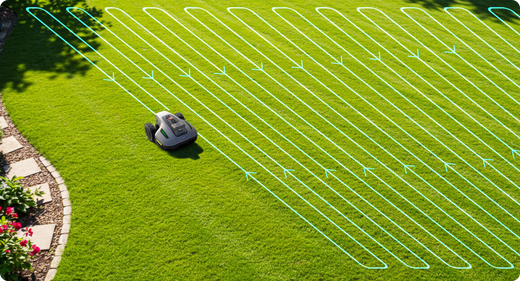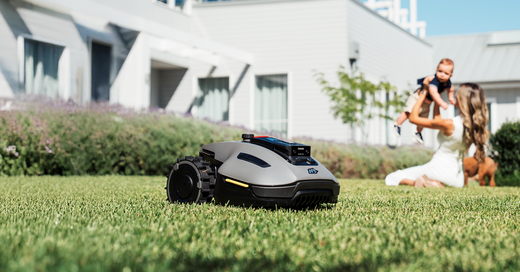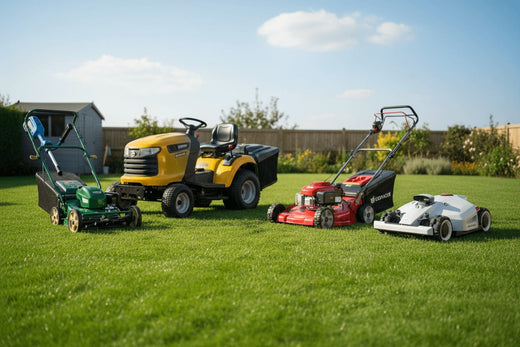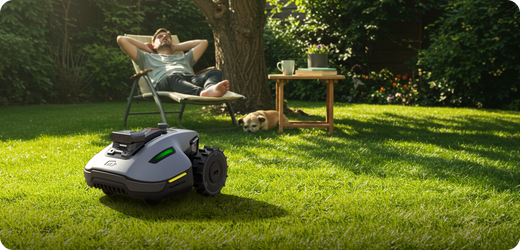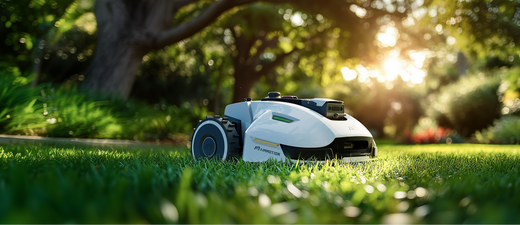Robotic mowers are becoming a go-to choice for homeowners looking for an automated, efficient solution to lawn care. With significant advancements in technology, these machines now offer greater convenience, precision, and cost-effective lawn maintenance, making them an attractive option for modern homeowners. The question remains: are robotic mowers worth the money? In this section, we will explore the costs, benefits, and features of robotic mowers in 2025 to help you determine if this innovative solution is the right fit for your lawn care needs.
What is a Robotic Mower and How Does It Work?
A robotic lawn mower is an autonomous machine that automatically cuts grass without human effort. These devices use a mix of navigation tools such as:
- Boundary wires or GPS navigation (for wire-free models) to define the mowing area
- Sensors to detect obstacles, slopes, and lawn edges
- Rechargeable batteries that power the mower quietly and emission-free
- Smart apps and scheduling for remote control and integration with systems like Alexa or Google Home
After completing a mowing session, the mower automatically returns to its charging station. Because they mow frequently and evenly, robotic mowers keep lawns healthier compared to traditional weekly mowing.
Are Robotic Mowers Worth the Money?
Yes, robotic mowers are worth it for many homeowners, but the value depends on your budget, lawn size, and priorities. They cost more upfront than traditional mowers, yet deliver long-term benefits in convenience, lawn health, and reduced maintenance.
1. Costs of Robotic Mowers
Robotic lawn mower pricing in 2025 generally falls into three tiers:
- Entry-level: $600–$1,000 (small lawns, basic features)
- Mid-range: $1,200–$2,000 (smart navigation, larger lawns, app control, better batteries)
- Premium: $2,500–$3,500+ (GPS or RTK navigation, wire-free setup, slope handling)
Other costs to consider:
- Installation: $200–$500 if boundary wires are required (not needed for wire-free models).
Maintenance costs:
- Battery replacement every 2–3 years: $100–$300
- Blade replacement every few months: $20–$50
- Cleaning sensors and wheels (DIY, minimal cost)
Compared to gas mowers, robotic mowers have lower fuel, oil, and repair costs, which makes them cheaper to maintain over time.
2. Benefits of Robotic Mowers
Robotic mowers bring more than just convenience — they also improve lawn quality, save time, and reduce environmental impact. Here’s a closer look:
1. Consistent Lawn Health
Robotic mowers cut grass more often than traditional mowers, usually several times a week. This frequent trimming keeps grass short, promotes denser growth, and eliminates the “scalping” effect common with weekly mowing. The result is a greener, healthier lawn over time.
2. Significant Time Savings
A robot lawn mower can save the average homeowner 30–40 hours per year on lawn care. Once programmed, it runs automatically — even at night — and returns to its charging station when finished. This makes it especially valuable for busy families or anyone who dislikes mowing.
3. Smart Features & Customization
Modern models include mobile app control, GPS tracking, weather sensors, and adjustable cutting heights. You can schedule mowing, track progress remotely, and even set “no-go zones” for flower beds or patios. Some brands integrate with Alexa or Google Home for voice commands.
4. Quiet & Eco-Friendly Operation
Because they’re battery-powered, robotic mowers are nearly silent compared to gas mowers. They also produce zero direct emissions, helping reduce air pollution. According to the EPA, gas-powered lawn equipment accounts for 5% of U.S. air pollution — robotic mowers avoid this entirely.
5. Lower Long-Term Costs
While the upfront price is higher, robotic mowers save money on fuel, oil, and major repairs. Batteries and blades are the main recurring expenses, and they’re relatively inexpensive compared to engine maintenance. Over several years, this adds up to real savings.
6. Safer Operation
Safety sensors stop the blades instantly if the mower is lifted, tilted, or encounters a child or pet. This reduces the risk of accidents compared to traditional mowers, which have exposed, fast-moving blades.
Key Considerations Before Buying a Robotic Lawn Mower

Before investing in a robotic mower, it’s important to consider safety, performance, maintenance, and whether it fits your specific lawn needs. Here are the main factors to evaluate:
1. Is a Robotic Lawn Mower Safe?
Yes, robotic lawn mowers are designed with multiple safety systems. Obstacle sensors help them avoid pets, children, or garden furniture. Tilt and lift sensors instantly stop the blades if the mower is picked up or tipped over, minimizing accident risk.
2. Are Budget Robotic Lawn Mowers Worth It?
Most budget models ($600–$800) are worth it for most homeowners; they can handle small, simple lawns but may struggle on larger yards or uneven terrain. But if you have a complex lawn, investing in higher-end technology robotic is worth it. And it's important to know when is the best time is to buy a lawn mower, which will help you save.
3. What Maintenance Does a Robotic Lawn Mower Need?
Robotic mowers are low-maintenance compared to gas mowers. Basic upkeep includes cleaning sensors, clearing grass clippings, and replacing blades every few months ($20–$50). Battery replacement is needed every 2–3 years ($100–$300). Software updates from the manufacturer also help keep performance smooth.
4. How Long Does a Robotic Mower Last?
A well-maintained robotic mower can last 8–10 years or longer. Premium models with stronger components and better batteries typically outlast entry-level options. Proper care, like regular blade changes and storage in winter, extends lifespan significantly.
5. Is a Robotic Lawn Mower Right for You?
A robotic mower is a really good choice for most lawns. It excels in medium-to-large lawns with open spaces. However, very small lawns may not justify the cost, and steep or obstacle-heavy yards can challenge lower-end models. For busy homeowners who value time savings and consistent results, robotic mowers deliver strong long-term value.
What Sets Mammotion's Robot Lawn Mowers Apart?
The robotic mower market is crowded, with options from Husqvarna, Worx, Segway, and Mammotion. While many mowers offer automation, Mammotion stands out for its advanced technology, adaptability, and smart features. Here’s a closer look at how it compares:
1. Advanced Navigation with No Perimeter Wire
use 3D vision technology combined with RTK (Real-Time Kinematic) GPS, allowing wire-free operation and precise navigation even on complex lawns. Many other brands still rely on boundary wires or less-accurate GPS, which can be slower or less efficient on uneven terrain.
2. Performance on Challenging Terrains
Mammotion LUBA series robot mowers can handle slopes of up to 80% (38.6°) and navigate uneven surfaces, potholes, or dense grass. In comparison, Husqvarna and Worx models can handle slopes up to 40–70%, making Mammotion ideal for lawns with steep areas or mixed terrain.
3. Smart Features & Multi-Zone Control
With Mammotion robot mowers, users can create custom mowing zones via an app, define no-go areas, and adjust cutting schedules. Other brands offer app control, but Mammotion’s multi-zone management and smart integration with Alexa and Google Home provide greater customization.
4. Safety & Obstacle Avoidance
Mammotion robotic mowers can recognize over 100 types of obstacles, stopping or navigating around them automatically. This is a step above many competitors, which rely on basic bump sensors or fewer object types.
5. Durability & Sustainability
Mammotion mowers are built with energy-efficient, durable materials, offering long battery life and low power consumption. Premium components mean fewer replacements over time, reducing waste and maintenance costs compared to some other brands.
|
Feature |
Mammotion LUBA Series |
Husqvarna Automower |
Worx Landroid |
|
Navigation |
UltraSense AI Vision + RTK |
Boundary Wire + GPS |
Landroid Vision |
|
Slope Handling |
Up to 80% |
Up to 70% |
Up to 30° |
|
Multi-Zone Control |
Yes |
Yes |
Yes |
|
Smart Home Integration |
APP/Alexa/Google |
APP/Alexa/Google |
App only |
|
Obstacle Recognition |
AI algorithm, 100+ objects |
Ultrasonic technology sensors |
HDR camera |
Practical Tips for Maximizing Robotic Mower Value
1. Set a Mowing Schedule
Frequent, short sessions maintain a healthier lawn and reduce strain on the mower.
2. Perform Routine Maintenance
Clean blades, sensors, and undercarriage weekly or biweekly, depending on usage.
3. Check Battery Health
Replace batteries before they lose efficiency to maintain cutting performance.
4. Secure the Mower
Use GPS tracking, alarms, or a locked storage shed to prevent theft.
5. Prepare Your Lawn
Remove sticks, toys, or large debris before mowing to avoid damage.
Conclusion: Are Robotic Mowers Worth the Investment?
Robotic mowers are a strong investment for homeowners seeking convenience, time savings, and consistently healthy lawns. While upfront costs are higher than traditional mowers, the long-term benefits — including frequent mowing, lower maintenance, smart features, and eco-friendly operation — often outweigh the initial expense.
For small lawns or simple landscapes, a traditional mower may still be sufficient. However, for medium-to-large lawns, complex terrains, or busy lifestyles, robotic mowers deliver unmatched efficiency and convenience.
Brands like Mammotion stand out for advanced navigation, slope handling, multi-zone control, and safety features, making them ideal for challenging lawns. Choosing the right model depends on your lawn size, terrain, budget, and desired smart features.
In summary: if you value time, consistency, and low-maintenance lawn care, a robotic mower can pay for itself over time, keeping your yard looking great year-round without the effort of traditional mowing.
Frequently Asked Questions
1. Are robotic mowers worth the money?
Yes—robotic mowers can be worth the investment for many households because they deliver consistent cuts, save time, and lower maintenance and fuel costs, even though they come with higher upfront prices.
They mow frequently and automatically (saving 30–40 hours/year), improve lawn health, and reduce noise and emissions compared to gas models, all while avoiding oil and spark plug maintenance. That said, their value depends on your budget, lawn size, setup complexity, and willingness to handle installation costs ($200–$500+)
2. Where does the grass go in a robot lawn mower?
The fine clippings are left on the lawn as mulch, which returns nutrients to the soil rather than being bagged or collected.
This mulching approach promotes healthier, denser grass and reduces the need for cleanup and fertilizer.
3. Do robot mowers use a lot of electricity?
Not at all—they use relatively little electricity, typically between 0.5 to 2 kWh per week, which works out to around $15–$20 annually at average rates.
That’s a fraction of the fuel cost per session for gas mowers, making them inexpensive to operate. Another source estimates power costs at just $3–$4 per month.
4. Do robot mowers cut wet grass?
They can, but it's not ideal—while most models manage damp grass, performance suffers on overly tall or wet lawns and may lead to clumping or uneven cuts.
They’re designed for regular trimming at shorter heights; long or wet grass can clog blades, so it's best to pre-mow manually if grass exceeds 10–15 cm (4–6 in). Users in humid or shaded lawns also report frequent problems
5. How much does it cost to install a robotic lawn mower?
Installation of wire robotic lawn mower typically costs between $200 and $500, depending on the complexity, though top-tier systems or larger lawns may push this higher.
This includes laying boundary wire, setting up the charging station, and programming; wire-free or advanced GPS systems robot lawn mower may not need to cost, you can install it by yourself or contact the seller.
6. Are robotic mowers worth it?
Yes—for those who value convenience, lawn consistency, safety, and reduced manual effort, robotic mowers often justify their price over time despite a high initial cost.
They’re quieter, safer (blades tucked beneath and stop on tilt/lift), and deliver cleaner, healthier lawns without regular manual mowing.
7. Do robot mowers reduce weeds?
Indirectly—by trimming grass frequently and finely, they help maintain dense turf that naturally suppresses weeds, though they don’t eradicate weeds directly.
Consistent mowing encourages grass density and reduces conditions favorable for weeds, even if some manual edging or weeding remains necessary.
8. Do robot mowers use a lot of electricity?
No—the electricity usage is very low, typically 0.5 to 2 kWh per week, meaning annual operating costs are minimal (around $15–$20).
This has already been noted in point #3 above, and is consistent across multiple reliable sources.
9. How much do robot mowers cost to run?
Operating a robot mower is inexpensive, generally costing only a few dollars per month in electricity and occasional blade replacements, though batteries (every 2–5 years) add moderate long-term cost.
Electricity runs about $15–$20 per year; blades may cost $20–$50 every few months, and battery replacement around $100–$300 every few years.
10. How long do robotic lawn mower blades last?
Blades typically need replacing every 3–6 months, depending on usage and lawn conditions; neglecting that interval can result in poor cutting performance.
One user reports changing to genuine blades every 6–8 weeks when performance dropped with worn or cheaper replacements. Manufacturers generally recommend replacement every few months to maintain cut quality.

